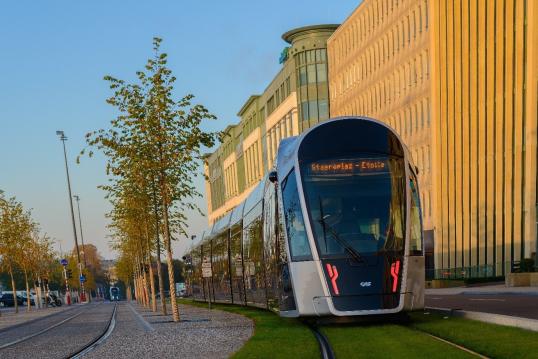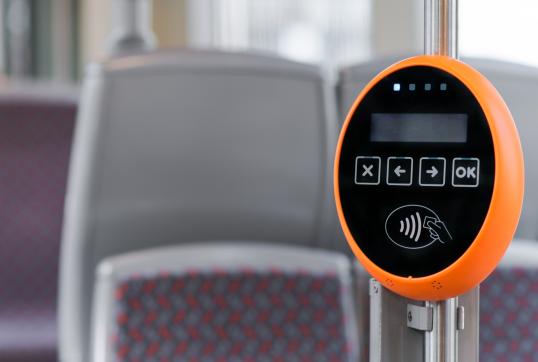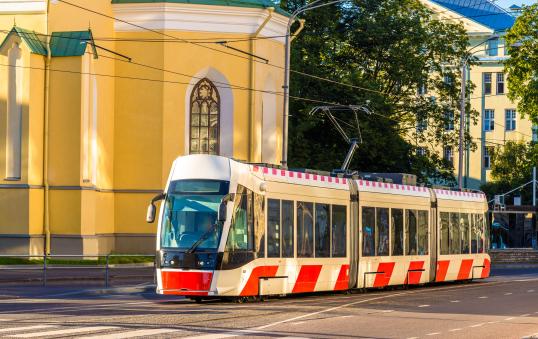- Topic
- Collective passenger transport
- Country
- Europe-wide
- Resource type
- Case study
First published on 28 April 2021.
Last year Luxembourg became the first country to introduce universal fare-free public transport (FFPT) for all modes at a national level. However, FFPT is not a new policy instrument and many European towns and cities have implemented fare-free schemes at different times over the past few decades. However, despite this wide pool of experience, FFPT is still poorly understood. Few independent evaluations have been carried out on how the policy has been implemented and what the benefits and disadvantages are. This case study reviews the implementation of different FFPT schemes from around Europe and reflects on how well these have done.
Context
Many European cities have implemented fare-free public transport (FFPT) schemes over the last 20 years. A comparison of these schemes shows that there are many differences in their implementation. This reflects the way that municipal authorities have tailored FFPT to the characteristics of each city (e.g. public transport network and funding arrangements, the socio-economic make-up of the population and the political landscape).
However, despite these differences in implementation, the objectives of different FFPT schemes are very similar. These include:
- promoting social inclusion;
- increasing the mobility and disposable income of particular socio-economically disadvantaged groups;
- lowering employment costs for employers and employees and creating new opportunities for work;
- increasing the modal share of public transport alongside modal shares for walking and cycling;
- reducing negative environmental impacts caused by urban transport (e.g. by reducing traffic congestion, and improving air quality and the long-term health of residents).
In action
The majority of FFPT schemes implemented in Europe to date have been limited in duration or scale. Reasons for this include improving social equity for specific groups, short-term publicity campaigns and some environmental purposes.
In contrast, full-scale FFPT schemes are much wider in their application, are usually long term, and may be universal schemes that form an integral part of integrated sustainable mobility schemes that seek to encourage behavioural changes.
Social equity
Many city public transport networks offer FFPT to specific user groups, such as young people in full time education, the unemployed and pensioners. Various qualifying factors are used, such as proof of age, residency, income thresholds. Eliminating fares improves accessibility for these user groups and increases public transport demand through price elasticity. The resulting upswing in travel facilitates new social and economic opportunities that would not otherwise have existed.
Prior to introducing full FFPT, Luxembourg already offered free travel to young people below the age of 20, students under 30, and residents who were socio-economically disadvantaged and qualified for a ‘social inclusion income’. However, the introduction of a universal FFPT was a manifesto commitment and was described by François Bausch, the Minister for Mobility and Public Works, as ‘an important social measure’. He continued, ‘the objective is to stop the deepening gap between rich and poor. For people on low wages, transport expenses matter. Therefore, it is easier to make it free for everyone.’
By eliminating all standard-class fares, FFPT is now expected to benefit around 40% of households in Luxembourg, saving each one an estimated EUR 100 per year.
Employment costs and opportunities
FFPT can be beneficial to low-income households and universal FFPT even more so. However, the link between FFPT and greater employment opportunities for disadvantaged groups has not yet been confirmed. None of the FFPT evaluations carried out to date has investigated this, so it is something that still needs to be established.
More broadly, FFPT may reduce employment costs for employers and employees. Employees do not have to pay for travel, and employers no longer need to consider subsidised transport (e.g. travel loans or a company car) as a possible benefit for their employees.
Modal share
Limited-period FFPT has been used successfully in the Swedish city of Gothenburg to boost the modal share of public transport. In 2019, the regional transport agency, Västtrafik, handed out 30,000 free 2-week passes valid for travel on buses, ferries and trams. This was part of a long-running outreach campaign to encourage residents to use Västtrafik’s services and to double the number of journeys made by public transport by 2025. Västtrafik has organised 30 such ‘test-ride’ campaigns since 2010 and estimates that around 20% of those receiving the free tickets, or 100,000 residents, have become regular users of public transport as a result.
Environment and health
The need to reduce traffic congestion and improve air quality are significant drivers behind the introduction of many FFPT schemes in metropolitan areas. As well as the economic benefits to be gained from shorter journey times due to reduced traffic, residents’ long-term health is improved by better air quality.
Concerns over short-term air quality were behind the City Council of Prague’s decision in 2019 to implement limited-period FFPT during future air pollution incidents. The aim was to reduce air pollution from traffic at critical times. Adam Scheinherr, Deputy Minister for Transport, said ‘In the event of a smog situation, public transport will be free. We want to make it clear that we must protect the air in Prague together. This measure, which will offer Praguers another alternative when travelling around the city, can also contribute to this’. The measure is expected to cost around EUR 190,000 per day when implemented.
Other cities have adopted similar short-term measures to improve air quality. For example, in December 2015, Milan and Turin temporarily introduced free travel over a number of days to mitigate high levels of air pollution from cars in urban areas.
There is some evidence to suggest that walking and cycling modes can be negatively impacted by the introduction of longer term FFPT. To this end, Luxembourg has planned for an additional 600 km of cycle paths alongside its FFPT project.
Stakeholder participation
Universal FFPT is a key part of Luxembourg’s sustainable mobility strategic plan, ‘Modu 2.0’, which takes a multimodal approach to encourage permanent behavioural change. Alongside an overarching objective to increase public transport use by 50% by 2025, the mobility strategy aims to reduce private car use by 15%, increase car occupancy from 1.2 to 1.5 people and increase the modal share of walking and cycling. Stakeholder engagement of employers, passengers, schools and colleges is seen as key to meeting these objectives.
A new ‘Mobility-as-a-Service’ (MaaS) app has been developed to simplify door-to-door travel planning across the bus, tram, train, bike, car-sharing and walking networks. Users select their preferred modes and the app provides travel options and an overall travel time based on live data on public transport and traffic. Park-and-ride areas have been integrated into the app along with the carpooling provider ‘CoPilote’.
François Bausch said, ‘The technology facilitating the use of sustainable means of transport is an important component of our multimodal mobility concept’. He continued, ‘By means of a seamless, intermodal and high-quality network, we encourage people to switch from their private cars to public transport. Travel information, punctuality and reliable connections are essential.’
Financing FFPT
Implementing FFPT means that other funding sources need to be found to make up for the shortfall in ticket revenue. However, most public transport networks in Europe receive significant public subsidy. In smaller transport systems, ticket revenue may be below 10% of total operating costs, which means that the additional cost of implementing FFPT compared to charging for public transport is comparatively small.
Universal FFPT can be the end point in a systematic reduction in fares. Additionally, some of the lost ticket revenue is offset by eliminating administrative and ticket infrastructure costs associated with setting and collecting fares.
As an example, Luxembourg funds its FFPT project from general taxation. This covers the additional EUR 41 million previously raised from ticket sales, which covered approximately 6% of the bus and 10% of the train network running costs or 8% of total budgeted running costs of EUR 500 million. Public transport was already heavily subsidised before the introduction of FFPT – a one-way standard-class fare cost EUR 2 and a day pass covering the whole network EUR 4.
Other FFPT schemes make up the shortfall in revenue from other local taxation sources.
Results
Evaluation results have been published for full-scale implementations of FFPT schemes in Hasselt in Belgium, Dunkirk in France and Tallinn in Estonia. However, these are based on limited data and the longer-term impacts are still to be established. The first evaluation of the Luxembourg FFPT project is due later in 2021.
Hasselt
Hasselt introduced a universal FFPT scheme between 1997 and 2014 on its public transport bus network, which served a population of 75,000, in co-operation with the public transport company De Lijn. The scheme was introduced at the same as measures were brought in to reduce road congestion. Over the implementation period, the number of passengers increased by a factor of 12 and the bus fleet was expanded from 8 to 46 buses and the number of bus routes was increased from 4 to 9.
Evaluation of the scheme found that 63% of all bus users had used the transport network previously, but now used the FFPT network more frequently than before. Approximately 37% of passengers were new users, of which 43% had switched from private cars, 32% from cycling and 25% from walking. However, despite the increase in numbers using the transport network, the FFPT did not have a significant effect on reducing car use overall.
The cost of the free bus experiment to the public transport company De Lijn quadrupled in 10 years from EUR 967,000 in 1997 to EUR 3.4 million in 2007. Following the financial crash in 2008, it was no longer feasible for the regional or municipal authorities to continue meeting the cost of the scheme. Therefore, fares were reintroduced in 2014, although transport remained free to specified user groups such as pensioners and those under the age of 19.
Dunkirk
In 2018, Dunkirk and surrounding regions (cantons) introduced a universal FFPT on the ‘DK’BUS’ bus network, alongside an ongoing restructuring of the network serving the Dunkirk urban agglomeration and surrounding area of some 200,000 residents.
The Dunkirk FFPT was implemented to increase accessibility and mobility for local inhabitants, with an overall objective to double the number of journeys by bus to more than 10% of all journeys by 2020. Other aims included improving accessibility to the bus network and other core services, and increasing the purchasing power of low-income groups. The project is being led by the Urban Community of Dunkirk (CUD). The project began in 2014 with a series of meetings with residents on the different proposals. In 2016, there was a public inquiry on the developed plan.
Investments have been made in the capacity of the transport network and connectivity since 2016. The bus fleet has been modernised and bus numbers have increased from 100 to 135 – 70% of these now run on liquified natural gas (LNG) and there are three electric buses. Seven new bus routes have been added and the 18-line bus network is now connected through three new ‘exchange’ hubs, increasing the overall transport offer to the city and surrounding area.
An initial evaluation by VIGS association for the period January to May 2019, compared to the same period in 2017, found that the number of trips increased by 85% and that bus use increased by 65% during the week and by 120% at weekends. A survey of 2,000 users found that the network is being used more intensively than before by existing users and that new users comprised 50% of all users. Almost half of new users (48%) had moved to the bus from private cars and the overall modal shift for all passengers from car to bus was 24%.
The project has received extensive coverage in the media. The survey found that this had given the public transport network a positive image and 68% of users surveyed claimed the new free network enhances the image of Dunkirk. Service quality has improved.
Prior to the introduction of FFPT, ticket sales raised only EUR 4.5 million or 10% of the annual running costs of the transport network. The resulting shortfall was met by an increased ‘versement mobilité’ (VM), a hypothecated urban regional transport/mobility payroll tax levied in France on employers with more than 11 employees. The VM now contributes 70% to the funding of FFPT and the remaining 30% (EUR 15 million per year) is provided by the municipal authority.
Tallinn
In 2013, Tallinn became the largest city to introduce a universal FFPT policy across its tram, trolley bus and bus network for 420,000 registered residents. Residents who are registered pay EUR 2 for a smartcard (the ‘Green Card’) after which time all journeys are free.
FFPT was introduced following public consultations that showed that 49% of residents were dissatisfied with paying for public transport. The objectives of the scheme were to promote modal shift from the car to public transport, improve the mobility of low-income and unemployed residents, and increase the number of people registered as being resident in Tallinn.
Public transport in Tallinn already enjoyed a very high modal share with 40% of all journeys made on the network prior to FFPT. Ticket sales of EUR 12 million in 2012 made up around one-third of operating costs. Following the introduction of FFPT, the shortfall in revenue was more than covered by another 25,000 residents who re-registered in the municipality, as the Tallinn municipal authority receives EUR 1,000 of each registered resident’s income tax per year.
The results from several initial evaluations of the impacts of FFPT in Tallinn have been published. It was found that after 3 months, the share of public transport increased by 3% overall, of which 1.2% was attributed to the FFPT policy. Car use decreased by approximately 5%. However, average passenger trip length decreased by 10%, which suggests more broadly that there was also an undesired modal shift away from walking (which previously made up 30% of all journeys) to public transport. The modal share of public transport increased by 23% in low-income, out-of-education and unemployed socio-economic groups. This suggests that FFPT led to additional trip generation for these user groups, increasing their mobility and making the city more accessible to them – as was intended.
A recent study by the National Audit Office analysed whether economic feasibility had been taken into account during the planning, organisation and funding of county bus transport between 2017-2019. Its main findings were that funding for public transport services is unequal between Estonian counties, and state expenditures in funding public transport has risen rapidly. Additionally, it was found that the bus network is not designed to meet people’s mobility needs as it got planned from the view of current public transport users only, not car users, and overall the free public transport has not reached its goal to reduce car journeys, as more than half of all trips to work are still being completed by car.
However, data has not yet been collected on any resulting economic benefits such as increased employment opportunities.
Challenges, opportunities and transferability
The implementation of most FFPT schemes in cities around Europe has been limited in scale, such as:
- FFPT targeted over the long-term at particular age groups and socio-economically disadvantaged segments of society to promote social equity;
- FFPT implemented for short-term promotional campaigns to increase the modal share of public transport, as has been used with some effect in Gothenburg;
- FFPT used tactically to try to improve air quality at critical times, such as was done during air pollution incidents in Milan, Turin and, most recently, in Prague;
- FFPT for key workers during the coronavirus (COVID-19) lockdowns across western Europe, as was done for NHS staff in the United Kingdom.
Hence, a key advantage of limited FFPT is that it offers considerable flexibility in approach, and existing revenue and funding structures, based on varying degrees of public subsidy alongside sales of tickets and annual passes, are maintained.
In comparison, distinct advantages offered by full-scale FFPT implementations include:
- wider social benefits to all low-income households;
- reduced overall employment costs for employees and employers;
- sustained modal shifts to public transport due to the price elasticity;
- greater potential for long-term behavioural change;
- reduced network costs through eliminating administrative and ticket sale functions.
However, full-scale universal FFPT requires significant investment in new transport infrastructure. This is because the transport network has to be able to cope with the increase in demand and meet standards of service effectiveness and quality. Otherwise passengers could stop using public transport and its modal share would drop.
Full-scale FFPT also requires new sources of funding to make up for the shortfall from ticket sales. Schemes that have been successful in this have done so through:
- general taxation – Luxembourg (since 2020);
- hypothecated local taxation – Dunkirk (since 2018);
- an increased allocation of income tax from residents – as for Tallinn (since 2013).
A final caveat is that, while results from Dunkirk and elsewhere show that full-scale FFPT can result in a significant increase in public transport use and a reduction in private car use, the overall share of public transport for all journeys is still small, typically around 10% of the total.
In Depth
Visit the following links to find out more information about:
- Free Mobility Luxembourg: https://www.mobilitegratuite.lu/en
- Luxembourg multimodal strategy: SUMP – ‘Modu 2.0’ https://transports.public.lu/fr/contexte/strategie/modu2.html
- Ministry of Mobility and public works: https://mmtp.gouvernement.lu/fr.html
- Luxembourg statistics: https://statistiques.public.lu/en/index.html
- Ministry of Sustainable Development and Infrastructure’s 2017 mobility survey ‘Luxmobil’: https://statistiques.public.lu/fr/actualites/entreprises/transports/201…
- Copilote Luxembourg, car-pooling: https://www.cfl.lu/en-gb/mobilitysolutions/detail/copilot-klaxit
- Dunkirk mobility project - Dk'plus de mobilité: http://www.dk-mobilite.fr/ and Dunkirk Bus: https://www.dkbus.com/
- VIGS study on Dunkirk: http://www.obs-transport-gratuit.fr/travaux-164/etudes-175/dunkerque-ef…
- Estonia free public transport: https://news.err.ee/1608136915/audit-report-free-county-public-transpor…
Photo Credits ©:
- https://mobilitegratuite.lu/en/press-room/
- M-Production and Leonid Andronov/ Shutterstock.com - no permission to re-use image(s) without separate licence from Shutterstock.



